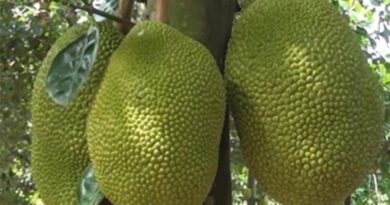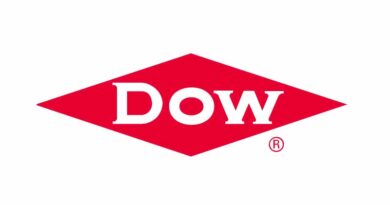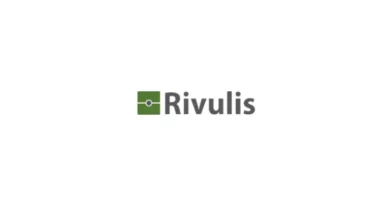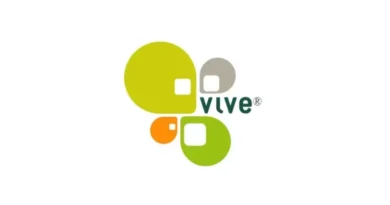Fertilizers and Agro-chemicals use in Viet Nam
08 September 2021, Vietnam: A study by the Netherlands Embassy in Hanoi on the current situation of fertilizers and agro-chemicals use in Vietnam and the potential market opportunities for the Dutch businesses.
Increasing use in fertilizer and decreasing use in plant protection chemicals
Vietnam is an agricultural nation with a natural area of 33.1 million ha in the mainland, ranking the largest 65th in the world. Agricultural land in Viet Nam is 27.3 million ha, of which 42.2% is for agricultural production land, 54.7% is for forestry land and ~3% is water surface area for aquaculture. Agricultural production land is, however, fragmented by small pieces of which almost 70% are less than 0.5ha and 25% are from 0.5-2ha.
The average 2.84% growth rate of agriculture and average 14.5% contribution to GDP in the past 3 years (2018-2020) was done by the labor force of 25% of total labor in in Viet Nam (www.chinhphu.vn 2021) taking into account the fact that labor force of Vietnam account for 49.5% of the country’s population .
Viet Nam is divided into 7 agricultural ecological areas from the north to the south. Each ecological area has its own advantages and focuses on certain key commodities like aquaculture, fruits, vegetables, flowers, livestock or industrial crops. Crop production is spreading along the country at different scale from region to region. There comes together with demand for fertilizers and plant protection chemicals.
Also Read: Union Agriculture Minister launches National Food and Nutrition Campaign for farmers
Over the past 3 years, the number of mineral and organic fertilizers registered has increased tremendously at >500% for organic fertilizer and ~ 50% for mineral fertilizer while the use of plant protection chemical is in down trend, as presented in a conference by the Ministry of Agriculture and Rural Development of Viet Nam late August 2021. The average use in Mekong river Delta is found higher than the average in the whole country.
A research by An Giang University showed that there is a parallel development of rice production in Viet Nam and the use of active ingredients and trade names of pesticides in the last 30 years. This is also shown by the increasing cost of agro-chemicals in rice production. Out of 48.9% of agro-chemical cost in the total rice production cost, of which around 40% is spent on pesticides and 56% is on fertilizers.
Agro-chemical import is very high (99-100%), national production capacity is limited. There are not many companies producing active ingredients for pesticides in Viet Nam. Pesticides chemicals are mostly imported (99% chemicals and 100% pesticides). The imported amount is enormous up to 70k to 100k tons. According to Customs Vietnam, the import value of pesticides was as high as more than 1 billion USD in 2017 and 939 million USD in 2018. Most products are imported from China, around 70% in2017. A research shows that 45% of import volume is done by a dozen of big companies.
Vietnam also exports pesticides and related chemicals to other countries like Cambodia, Taiwan, Singapore, Myanmar and Laos up to less than 10k tons in total.
Viet Nam has less than 100 companies producing plant protection chemicals and ten times higher of companies producing fertilizers. Most of these companies base in the Mekong River Delta.
Shifts in consumer and market demand for safe produce
Viet Nam is an open and export oriented economy. Consumer demands, consumption trends and requirements in importing countries are important factors that steer the development in Viet Nam, speed up the process of awareness and practices by farmers. Moreover, the growing of the middle income and their accelerating spending has led to greater higher requirements for products (healthy diet, of high quality, organic) but also more responsible awareness about environment. People generally care more about the environment and the planet they live in when seeing the consequences of climate change, pollutions and the bio-diversity loss. This has put the reduction of agrochemicals use high on the national and global agenda and gradually turned into practices by governments, businesses and farmers. These are served as key driving factors for changes.
Encouraging changes can be seen in the last 3 years with increasing trend in use of organic fertilizer. Many more products have been launched to the market. At the same time, less and less plant protection products are used as indicated in a survey by FAO from 1996 to 2018 and 2020.
International commitments or free trade agreements like the European – Viet Nam Free Trade Agreement (EVFTA) are important incentive for Vietnamese entrepreneurs and farmers to go greener, to reduce the use of agro-chemicals. The fact that the European – Viet Nam Free Trade Agreement has been signed and come into effect since August 2020 has open up more potential for Vietnamese and European businesses. European market is considered a high level market with strict requirements not only on product quality, food safety but also on social and environmental aspects. This serves as both opportunities and challenges for Vietnamese businesses who wish to enter or enlarge their business in this market.
State management:
The state management of agro chemicals in Viet Nam has been improved in the last few years. However, challenges remain at different levels: state management, businesses and farmers uses. According to the list published by MARD, there are 503 mono active ingredients that are grouped into pesticides (133 active ingredients), fungicides with 157 active ingredients and herbicides with 85 active ingredients. A real challenge for state management is the monitoring of cocktailing these mono-ingredients into active groups.
As for farmers use level, it seems that using pesticides has been considered a guarantee for good harvest and has become an ingrained routine to most farmers. It would not be an easy task to change this mindset. As for businesses, pesticides business truly brings about huge profit, attracting large number of groups, companies, distributors.
These all together make the task of governmental agencies harder in putting in place regulations for the control of pesticides, also in finding alternative measures to reduce negative impacts on health and environment.
Overuse of pesticides leads to serious environmental problems. According to the Vietnamese Ministry of Natural Resources and Environment (MONRE), disposed water from agricultural production is the key issue. For example in MKD, the overuse of pesticides in farming activities has tremendous impact on aquaculture. Evidence suggests that the residue of chlorpyrifos was found in cat fish in US. 60% of contaminated ground water in Vietnam is the result of the overuse of pesticides and fertilizers from agricultural production (Saxion 2019 Prof. Futselaar). This issue is getting more and more awareness in the past few years and changes have been made step by step.
A number of policy efforts have been taken by the government. For example, the Mekong Delta is an important agricultural production hub of Viet Nam and is suffering from the huge impacts of climate change. In 2017, the government issued Resolution 120 on climate-resilient sustainable development in MKD to push forward the restructuring of not only agriculture in the delta towards quality oriented and nature-based farming practices. Next to that, other regulations can be counted including Decree 109/2018 on organic farming, paving pathways for the development of organic farming in the country; Decision 3965/2018 by the Ministry of Science and Technology stipulating organic farming production criteria; Decision 2025/2020 by MARD on the agricultural master plan in MKD. These set important milestones in an effort to reduce the application of hazardous pesticides in agriculture.
Still, there is a long way from policy to practice when statistics show that the average use of agro chemicals in the Mekong River Delta is higher than the average us of the whole country.
Private sector acts and practices at farm level
As for private sector, there is a new wave of clean/organic agriculture and nature-based agricultural practices that have been promoted throughout the country.
Other technical approaches and farming models are also suggested to be applied by farmers for reduction of pesticides costs and improving food safety: Global GAP, Viet Gap, IPM, 1M5R (1 must do being certified seeds, 5 reduction being seedlings, fertilizers, pesticides, water use and post-harvest loss), organic farming, PGS (participatory guarantee system) or greenhouse practices. All these efforts are seen and served as small bricks to build up a greener economy.
Opportunities for Dutch stakeholders and companies
The Netherlands, the innovative country in agricultural development, a pioneer in circular agriculture, a high quality market in Europe has been trading with and in Viet Nam for decades. Viet Nam is a potential destination for Dutch business. Viet Nam can be a good market for services, knowledge, and products/equipment for high quality agro-products and can also then be a quality source for international trading exotic fruits and vegetables products.
Highland area in Viet Nam like Da Lat, Lam Dong, Central Highlands or Moc Chau, Son La are potential markets for quality vegetable seeds, flower bulbs and technologies & equipment for not only indoor production. Areas like Red River delta and Mekong river delta are known more for out-door production.
Apart from trading portfolio by businesses of the two countries, governments of Viet Nam and the Netherlands are supporting and facilitating in policies or financially the cooperation and investment by businesses.
The public private partnership (PPP on Agro-chemicals: http://psav-mard.org.vn/agro-chemicals.htm) is an example.
This PPP TF on Agro-chemicals has the function of connecting relevant stakeholders, strengthening public-private dialogue, rational resource allocation, and coordinating with other task forces to manage the use of chemicals in commodity lines, important commodities are pepper / spices, tea, coffee, vegetables. Up to now, the partnership has mobilized the active participation of professional departments under MARD as well as domestic and international companies
Another example is The Dutch Fund for Climate Development (DFCD: www.thedfcd.com). Origination Facility’s Investment Committee approved a €350,000 grant together with an SNV technical assistance package for Orlar Vietnam, on 14 December 2020. This funding will support the advancement of high-technology farming in Lam Dong Province in Vietnam which will achieve net zero greenhouse gas emissions, with zero wastewater. Over the coming five years, this funding will allow the company to supply locally grown, pesticide free produce and vegetables with minimal footprint while creating jobs and providing employment opportunities for women and the indigenous population. (https://snv.org/update/dfcd-invests-net-zero-greenhouse-gas-farming-vietnam
The OKP project on horticultural value chain in the North of Viet Nam is an example of positioning the Netherlands as a country for innovative solutions for sustainable and nature-positive production.
Understanding of proper investment in agriculture production like using certified seeds, applying precision agriculture, using right technologies for suitable crops, applying bio controls agents, applying organic or high quality fertilizers…. help to achieve this goal – sustainable and circular agriculture for healthy living of all. These topics are high on agenda of the Dutch Embassy in Viet Nam for policy dialogue and business support.















